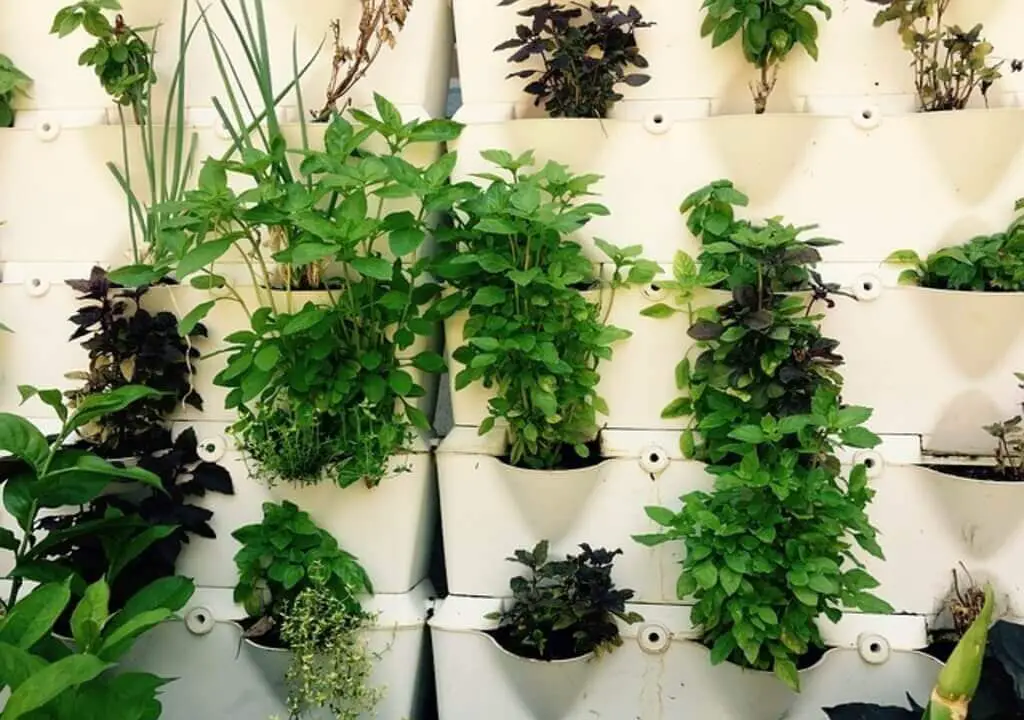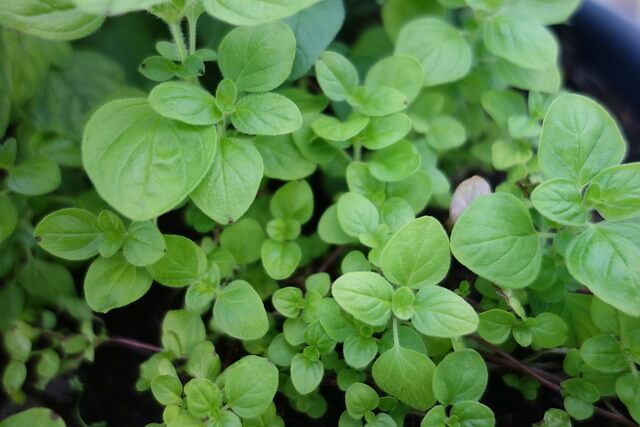10 Best Herbs To Grow In Hanging Baskets: Expert Picks!

Herbs are an excellent addition to any home. They provide a beautiful, fragrant decoration and can be used in cooking for wonderful flavor!
However, not all herbs grow well in pots on the ground or in hanging baskets that hang from windows. So which ones do?
This article will list ten of the best herbs to grow in hanging baskets, so you know what to look for when shopping at your local nursery.
Table of Contents
Parsley

Growing parsley from hanging baskets is a great way to grow parsley in your kitchen. You can grow them on the window sill, or if you have space outside, hang them up and watch as they thrive. Parsley is best harvested by cutting off what you need for cooking at any given time. This will ensure that it stays fresh longer, and you’ll always have some handy when needed!
It is also a nice way to bring some greenery into your kitchen during wintertime when everything else has gone dormant. The most difficult part about maintaining a parsley plant from a hanging basket is providing up to 4 hours of sunlight daily, and keeping it watered consistently.
Related Posts:
Marjoram
Marjoram is a type of herb that can be grown in hanging baskets. It’s one of the more popular herbs used for cooking, and it tastes good with chicken or lamb dishes. Growing Marjoram from hanging baskets is an easy way to add flavor to your favorite recipes without spending a lot of time or money on gardening supplies.
These herbs will need to be watered often, but are very easy to grow and require little maintenance. A hanging basket of marjoram will thrive if you provide it with bright light and warmth. It needs six hours of sunlight per day or more, so place the container near a window where it can get plenty of sun during the day.
Related Posts:
Winter Savory
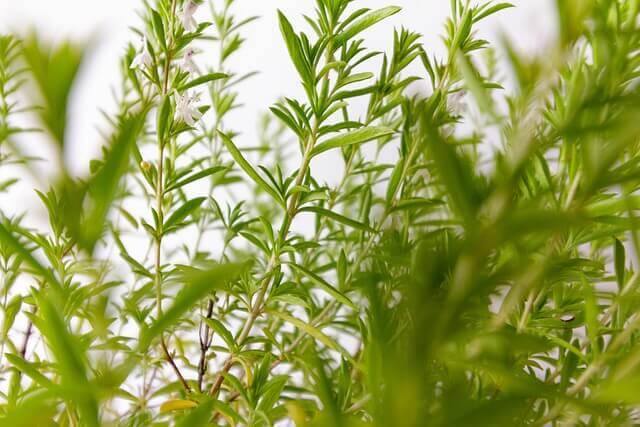
Winter Savory is a perennial herb that can be grown in a hanging basket, making it an excellent option for those with limited space. Growing Winter Savory in hanging baskets is an excellent way to get a lot of flavorful herbs for your winter cooking. In late summer, plant winter savory seeds in a pot of soil and then cover the seed with 1/4 inch of soil.
Then water it well and place it outside where there is at least six hours of sunlight per day. If you have an area indoors that gets enough light, this will work as well. It takes about 3 weeks for the plants to start growing from their seeds. Winter Savory must be watered regularly until the plant reaches maturity at six months old.
Salad Burnet

Salad Burnet is a perennial herb that has the perfect features for a hanging basket. These plants are native to Europe, but they can also grow well in zones 5-8. They have pretty blue flowers that come out in the summer, and their foliage look like miniature spinach leaves with small spikes on them. Salad Burnet is an edible plant which you can use for garnishing salads, chicken, pizza or other dishes as well as for tea.
The plant prefers full sun but will grow in partial shade too. It also thrives in most soil types and tolerates drought conditions. You can pick the leaves at any time, though they are best when harvested young for salads or just as a garnish on dishes like pizza or tacos. Salad Burnet is great because it’s edible year-round!
Arugula

Arugula (Rocket) is a fast-growing annual that can be grown in a hanging basket. Growing Arugula from hanging baskets is an easy way to enjoy this delicious herb in your own home. It is very easy to grow and does not require much care. It has small, white flowers that bloom from April through September. The leaves of the arugula plant are very flavorful and can be used for a variety of dishes.
Hanging baskets offer a unique solution that will still provide you with fresh plants while giving you some extra room on your windowsill or balcony. This plant does well in containers and thrives when given adequate water and sunlight. Arugula prefer to grow indoors during the winter months because they do not like to get cold, but it will tolerate outdoor temperatures as low as 0 degrees Fahrenheit (-18 degrees Celsius).
Lavender
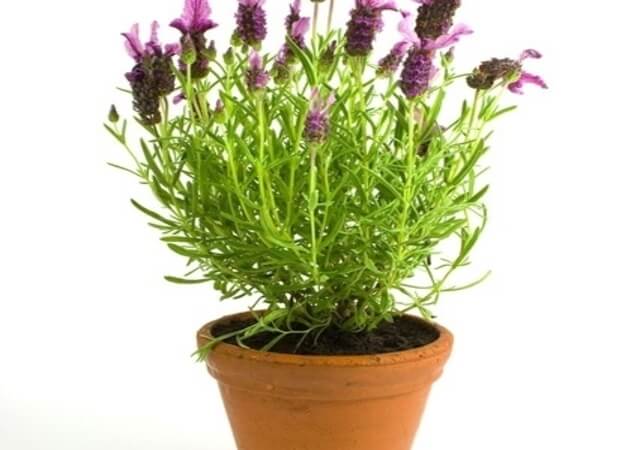
Lavender is a beautiful and delicate plant that can be grown in a hanging basket. Hanging baskets are a great way to display this aromatic flower as they not only look nice, but also smell great! The most common lavender variety, Lavandula angustifolia, is hardy and easy to grow as long as it has plenty of sun and well-drained soil.
To get the best blooms, keep plants pruned back by removing some stems each year in late winter or early spring. Select a location with full sun exposure. Lavender prefers plenty of space between them and keep their roots from getting too wet when watering them. The best time to plant lavender is from late spring to early summer, but any time will work if you are patient enough for the plant to grow.
Related Posts:
Mint

Mint is a great herb to grow. It smells good, tastes delicious, and it’s easy to take care of. There are many varieties of mint that all have their own unique flavor. But the most popular variety is spearmint because it’s so refreshing. But what if you don’t have any place to put your plants? That’s where hanging baskets come in! A hanging basket will let you enjoy the taste and smell of fresh mint without taking up too much space in your kitchen.
Growing mint from hanging baskets allows the plant to thrive because it does not need as much sun or water compared to plants grown in pots or in the ground. Hanging baskets are easy to maintain, and the roots will still be restricted and will not spread too far out, making it perfect for people who have little time or space available but still want a herb garden.
Related Posts:
Creeping Thyme
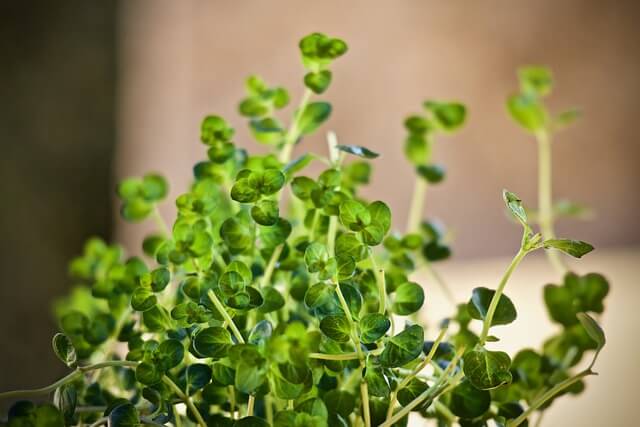
Creeping thyme is a great plant to grow in a hanging basket. It thrives on neglect and can survive with very little water or sunlight. This makes it an ideal choice for those who don’t have the time, space, or patience to care for their plants well. The only real drawback of creeping thyme is that it doesn’t produce any flowers and so isn’t as attractive as other flowering herbs like lavender. It has a wonderful aroma and delicate leaves, which makes it perfect for ornamental purposes.
The plant can also be used as an ingredient in various dishes, including pastas and salads. You can use it to cover up walls, or just place it in the pot and let it hang down. This type of thyme will spread out and eventually make your pot full, so you may want to transplant into another container before that happens. Creeping Thyme does not need a lot of sun or water, so you don’t have to worry about taking care of this one too much!
Related Posts:
Creeping Rosemary
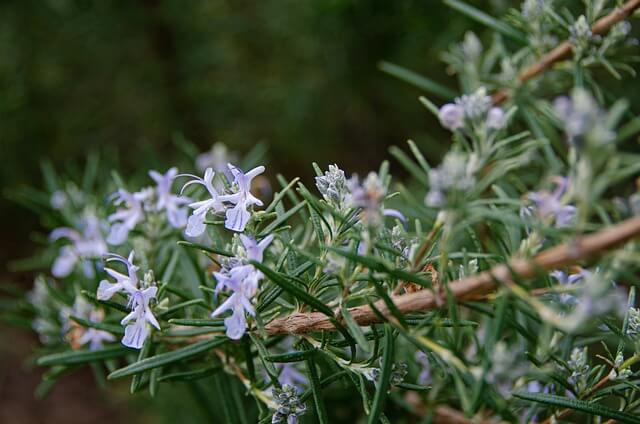
Creeping Rosemary is a Mediterranean herb that can be grown in a hanging basket. It needs little water and sun, but will thrive in any climate as long as it has a little of both. Creeping Rosemary (Rosmarinus officinalis) is an evergreen perennial plant with woody stems that grows from 2 to 4 feet tall. Creeping rosemary likes lots of sun, but will also grow well in less sunny areas if they are kept moist.
Creeping Rosemary is used for flavoring many dishes, including pork, chicken, and vegetables such as potatoes or carrots. Many people grow Creeping Rosemary indoors because it needs lots of light during the winter months. They need plenty of sun, so find an area with at least 6 hours per day, along with moderate watering about once every week or two when needed.
Related Posts:
Oregano

The sun-loving oregano plant is a perfect candidate for growing in hanging baskets. The herb’s leaves can be used to season and flavor many dishes, such as pasta sauces, pizzas, and salads. Hanging plants also make great indoor decorations when placed near windows or on balconies with access to plenty of sunlight. Oregano can be grown anywhere and require very little care.
Water once or twice a week, depending on climate conditions (let it dry out between watering). Fertilize every two weeks with liquid fertilizer or an organic granular fertilizer like Espoma Organic Plant Food 10-4-8 at the rate of 1 tablespoon per gallon of water. Provide your plant with at least 4-6 hours of full sun daily.
Related Posts:
Growing Tips
- Use moist potting soil for the plants and make sure it has good drainage by adding sand or perlite.
- A great way to keep them nourished is by adding fertilizer or compost regularly. When it comes to fertilizing plants, 12-8-4 ratio is a good option for most plants including herbs.
- Herbs should be cut back regularly, so they don’t become woody or leggy. If the herbs start to outgrow their hanging baskets, remove them and, thin them out into smaller parts by dividing them up and replant.
- Hanging Baskets: Select a hanging basket that is a minimum of 12 inches in diameter to allow for healthy root growth, fill it with soil, add compost if desired, then plant seeds or small plants according to the packet instructions. Hang them up near a window with at least 4 hours of direct sunlight per day.
- In order to grow your own herbs, you need a sunny spot with lots of room for plants to sprawl out.
- They need lots of water, so make sure the soil is moist all the time.


